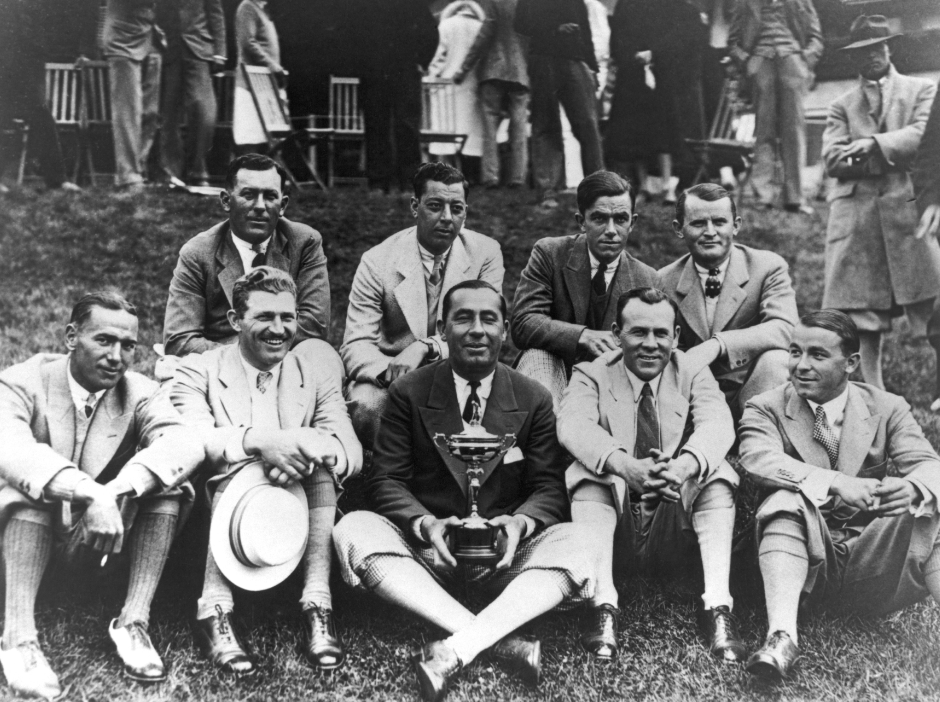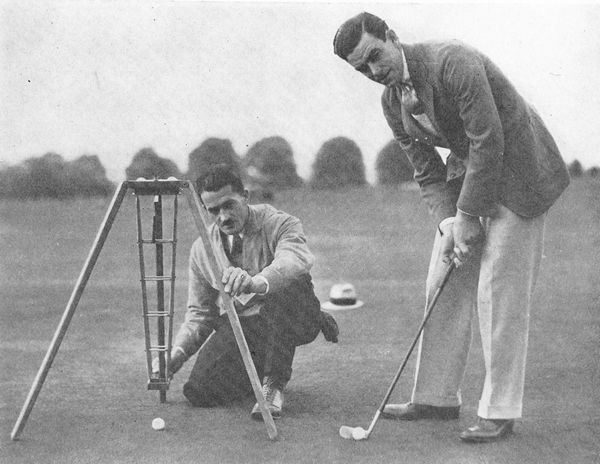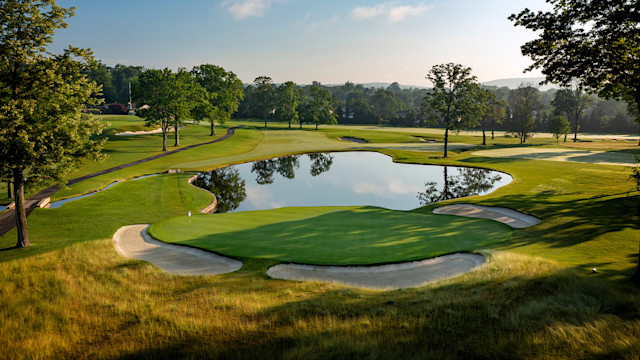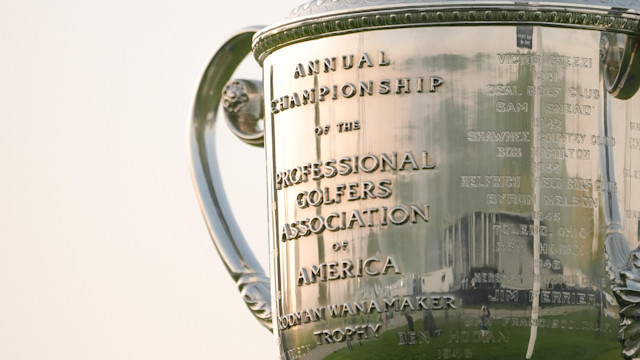Game Changers
5 Things to Know About Johnny Farrell, the Newest Member of the World Golf Hall of Fame
By Ryan Adams, PGA
Published on

Who is Johnny Farrell?
That might be the question a lot of people ask when they hear his name being inducted into the World Golf Hall of Fame tonight in Pinehurst. A quick search online may happen next, and it may pull up that he defeated Bobby Jones in a playoff to win the 1928 U.S. Open.
Of course, that’s what Farrell is known for most is taking down one of golf’s iconic names during his heyday in Jones. But it’s far from the only thing. He was also a revered PGA of America Golf Professional, especially as the Head Professional at famed Baltusrol Golf Club in New Jersey.
And the more you dig into Farrell’s story, the more you’ll see that he wasn’t just the 1928 U.S. Open Champion — he, like Jones, is one of golf’s legendary icons.
Here are five things to know about Johnny Farrell.
He got his start at Siwanoy Country Club
Born in Westchester, New York, to very poor Irish immigrant parents, Farrell’s father died at age 4. It meant that he needed to find a way to support his family and so, at 8 years old, he started shagging golf balls at Siwanoy Country Club, where his older brother Jimmy already worked. Jerome Travers, the 1915 U.S. Open Champion saw his swing one day at the range and remarked, “You’ve got some talent.”
Farrell became more interested in the game and gained the respect of Travers, eventually becoming Siwanoy’s caddie master and assistant professional in 1916. It’s at Siwanoy where the membership began to support Farrell in his playing endeavors and he would never forget that the rest of his life.

In 1924, he accepted the job as co-Head Professional with Jimmy at nearby Quaker Ridge Golf Club. The membership there was equally supportive in providing Farrell with the resources to play — a gesture Farrell was equally lifelong grateful for, much like at Siwanoy.
Played professionally for just 12 years, but amassed an amazing resume
The 1920s were Farrell’s taking off point. He turned professional in 1920 and by the end of 1927, he’d won 16 times on the PGA TOUR and played on the victorious first U.S. Ryder Cup Team in 1927 at Worcester Country Club. His name was becoming more well-known not just for his play but also for his appearances in golf coaching films that were released nationally.

Farrell with the U.S. Open Trophy.
And then, came 1928. That’s where Farrell famously battled Bobby Jones, then a two-time U.S. Open Champion as an amateur, to a tie after 72 holes of play at Olympia Fields near Chicago. Farrell would go on to win the 36-hole playoff by a stroke, and it was the high watermark of a blossoming career. He’d go on to win a handful more times, accumulating 22 PGA TOUR wins (27 total), a 2nd at the PGA Championship and Open Championship in 1929, and a 6-1-1 record on three U.S. Ryder Cup Teams.
Between his outstanding play, his dashing appearance — Rodman Wanamaker called him the “best dressed golfer” in 1928, and that’s saying something — and an obvious love for the game, Farrell was making a name for himself in golf. But he realized that winning didn’t come with a ton of money . . . so what could he do?
One of the very first professionals to create endorsements
Taking advantage of a sterling playing resume, a name known in films and good looks, Farrell became one of the first golfers to create the modern endorsement. Barbasol, Coca-Cola, Churchill, Lucky Strike, Ovaltine, Planters, Schwepps, Seagrams . . . all those name brands and more had Farrell as their celebrity endorser. He even created and designed clubs for Wilson, which was a real groundbreaking idea at the time.


While Farrell didn’t have the swashbuckling pizazz of a Walter Hagen, he made a name for himself in his own way. He hung out with Babe Ruth and Lou Gehrig. He was best friends with Gene Sarazen, and later, he and his wife Kay would go on their honeymoon with Gene and his wife Mary. They were that close.
Speaking of Kay — here’s a fun nugget on how her and Farrell met. Playing in a tournament in Pennsylvania, Johnny saw Kay handing out programs to fans. He hit his shot and the ball rolled up to her feet, wherein Johnny then asked her out on a date. How about that for “shooting your shot?” Maybe Farrell was the pioneer of that too.
Started one of the first golf TV shows, called “Swing Time”
Oh, would Farrell be a star on YouTube if he was around today. Luckily for those channels, and all golf shows across TV and social media, they had Farrell as their kickstarter.
In the 1950s, he created “Swing Time,” which appeared on CBS in New York. By that time, Farrell was in the midst of his legendary career as a Head Professional at Baltusrol. He felt it was his job to bring people to golf and love the game just like he did, especially women and juniors. Members of Baltusrol would write Farrell letters about their swing and he would write them back with tips on how to improve. Rhythm and tempo were key tenets of any Farrell swing, and lesson for that matter — he used to bring a metronome to the range to work on rhythm.

Farrell (top row, third from left) was part of three U.S. Ryder Cup Teams during his career.
“Swing Time” was one way for Farrell to bring his passion to a wider audience, but he also made sure the military community knew about golf as a form of recreation. While he was too old to serve in World War II — and very disappointed not to be able to serve his country — he became a warden for the U.S. military, ensuring those who were in combat had access to golf. Farrell created multiple military golf programs, and even formed the first one at a base in Iceland.
In the end, it didn’t matter to Farrell who got into golf . . . all that mattered to him was that they did.
There was no greater honor to him than being a golf professional
Throughout his career, Farrell always referred to himself as a club pro. He was never a touring professional or a player . . . he wanted to be known as a club pro, or as they’re known now, PGA of America Golf Professionals.
What started at Siwanoy and Quaker Ridge became nearly half a century as Head Professional at Baltusrol, where he is still beloved to this day. The Farrell Room resides in the clubhouse, with plenty of Farrell memorabilia hanging from the walls. When Baltusrol had a clubhouse fire, the Farrell keepsakes were of high priority. No one meant more to the club than Johnny.

Farrell using a stimpmeter at Baltusrol.
During his latter Baltusrol years, Farrell started wintering in Florida. He became the first Head Professional at a new course in Boynton Beach called the Country Club of Florida, and Farrell would serve there for 26 years until 1979, living at the club until his death in 1988.
Back to Baltusrol for a moment, though — it’s interesting how things came full circle for Farrell. Long Jim Barnes, the winner of the first-ever PGA Championship, was a mentor of Farrell’s alongside Travers. A young Johnny met Barnes at the 1916 PGA when he was just a kid and he stuck with Barnes. The two ultimately became close friends and Farrell hired Barnes to be a professional at Baltusrol.
This short anecdote, and there are plenty more, explain who Farrell was at his core. He never forgot where he came from back in Westchester, who helped him and how a career blossomed because of his talents were supported so generously. In return, he was incredibly self-aware and generous to those around him, even if he didn’t say out loud.
In the end, it didn’t matter to Farrell who got into golf . . . all that mattered to him was that they did.
It was all buoyed by his love for the game. A passion that was 1-of-1. There will never be a Johnny Farrell in golf again . . . but because of Johnny Farrell golf was never the same.


